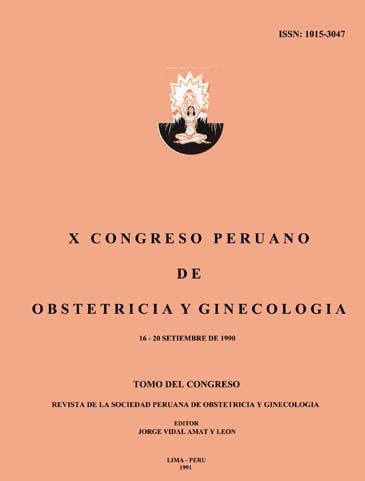Stress test for breast stimulation.
DOI:
https://doi.org/10.31403/rpgo.v37i1668Abstract
A prospective, experimental clinical, was performed in 50 pregnant women in high risk obstetric Lima Maternity (INAMI) Hospital, between March and June 1990 to assess fetal conditions can stressante a different test to test oxytocin stressante (TSO) in terms of costs, resources and risks, but to produce a similar uterine response and therefore to give adequate and reliable information about fetal well-being. Gestational age in 49 cases, was between 37 and 41 weeks. A case of severe pre-eclampsia was 34 weeks. Electronic fetal monitoring (EFM) was performed with cardiotacógrafos two channels. A record will be made at baseline for 10-15 minutes, during which spontaneous and remote uterine contractions in pregnant women were registered 21 and no spontaneous contractions were recorded in 29. After breast stimulus started, one bilateral as appropriate, within 5 to 20 more minutes (latency period), useful contractions in 45 pregnant and in 5 cases were presented, no response was obtained. The latency period was lower in those pregnant women who had a previous uterine contraction stimulus to the breast (p <0.005) and 70% of the total sample, childbirth was presented and completed within 48 hours after conducted the review . The results show, that breast stimulation, less personal and less economic resources and psycho-physical trauma for the mother, is a good alternative to the classic stress test with oxytocin.Downloads
Download data is not yet available.
Downloads
Published
2015-07-29
How to Cite
Ayllón Bulnes, G., Huamán Elera, J., & Lam Figueroa, N. (2015). Stress test for breast stimulation. The Peruvian Journal of Gynecology and Obstetrics, 37(12), 67–73. https://doi.org/10.31403/rpgo.v37i1668
Issue
Section
Congreso
















